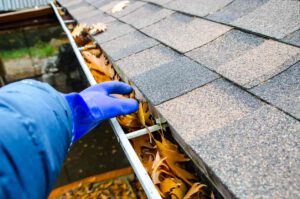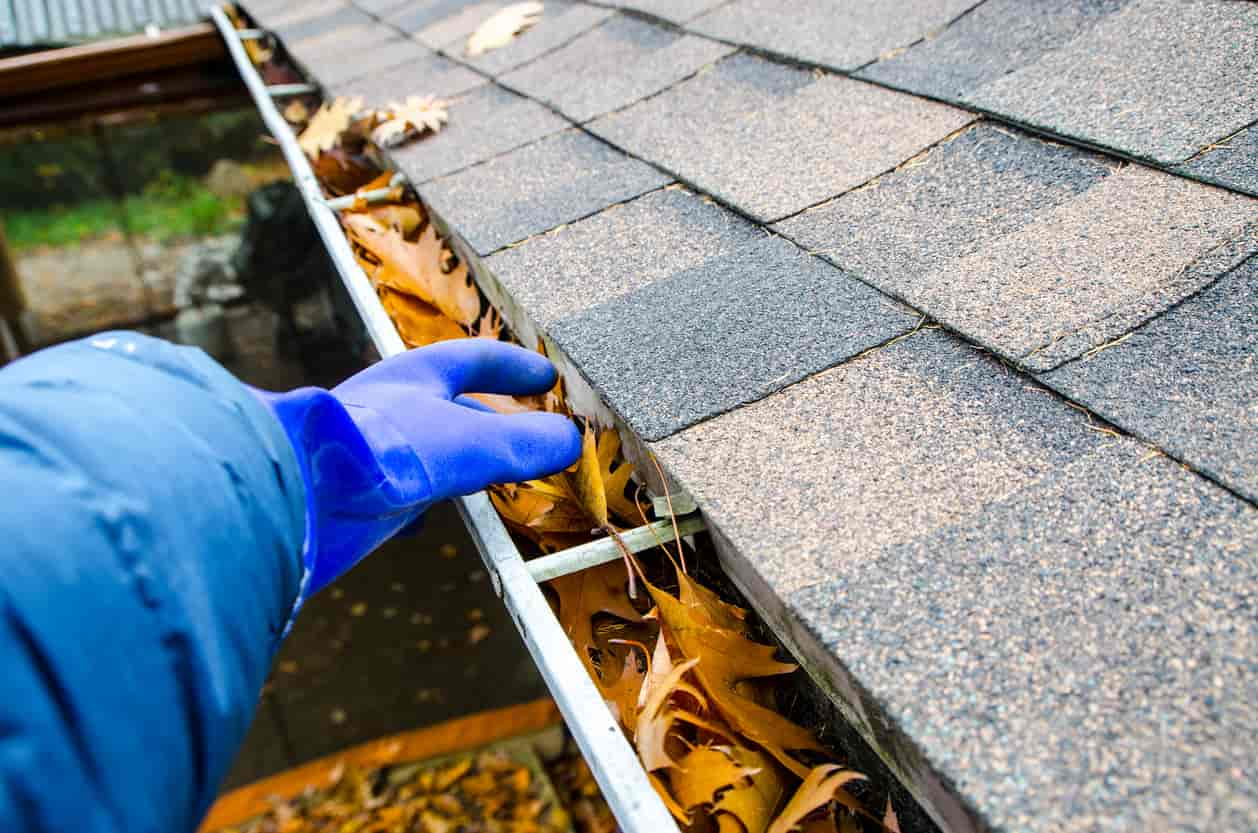Professional gutter maintenance can help shield your home from gutter damage during harsh winter weather. This includes reinforcing your gutters to stand up to hail and to keep them from sagging or falling off the fascias or roof.
Gutter problems often develop from little things that go overlooked over time, like clogs and water damage to the eaves and roof. The best way to prevent these problems is through regular maintenance and inspections. Visit https://guttercleaningcharlestonsc.com/ for professional help.
Gutters keep rainwater from causing damage to the building materials, and they also help prevent water from pooling near the foundation. However, they need to be cleaned regularly to avoid excessive debris buildup that can overflow and spill into the house. If left unchecked, the excess water can cause mold and mildew that can deteriorate the exterior of the house and compromise indoor air quality. Gutter cleaning is a relatively easy project that can be done by the average homeowner. A little time and effort can restore a gutter to good condition and ensure that it works properly for years to come.
Before you start cleaning your gutters, make sure that you have a sturdy ladder and that you’re physically capable of climbing it. A single-story home may only require a stepladder, while a two-story house will need an extension ladder that extends to the highest point on the roof. If you’re working on a high ladder, always use caution and never climb above the top rung specified by the ladder manufacturer.
Begin by removing any obvious debris. You can do this by hand or with a wire brush, and then use a hose to flush the remaining dirt and debris. After the gutter is clean, take this opportunity to check for rust or other signs of wear and tear. If you find any areas where the gutter is missing, for example, you can patch them using a gutter repair kit that you can purchase at most home improvement stores.
Once you’re finished, you can install gutter guards to prevent debris from entering the gutters and clogging them. This will still allow rainwater to flow into the gutters from the roof, but it will keep the majority of the debris out. If you have trouble keeping up with regular gutter cleaning sessions, you can even consider installing gutter diverters to make the job easier.
It’s recommended to clean your gutters twice a year–once in the spring and once in the fall, when your yard will be most overrun with leaves and other debris. However, if you live in an area with many trees, it’s possible that you’ll need to do this more frequently.
Check the Pitch
If your gutters are clean and clog-free but still overflowing, it could be due to an incorrect pitch. Gutter slope is very important in order to redirect water flow away from the home and prevent damage to fascia boards, sub-roofing, walls, windows, and landscaping. The best way to check the slope of your gutters is to use a level. If you aren’t comfortable climbing a ladder, have a professional inspect the gutters for correct pitch.
When a gutter is not pitched properly, it will collect standing water and cause water to overflow the gutters at the end caps or through holes in the ends of the gutters. It’s essential that you do a visual inspection of the gutters every couple months and look for signs that the gutters are not slanted correctly.
It’s also important to understand that standing water and overflowing gutters may not always be the result of an incorrect pitch. Incorrect gutter pitch can also be caused by clogged downspouts and underground drains, so it’s vital that you do a process of elimination to ensure that the problem is not a result of a clog.
To adjust the pitch of your gutters, you will need to wear gloves and pop out the gutter pegs on the sides and around the corners. Once the gutter is loose, you can drop it to the desired angle sloping it toward the downspout. Once the gutter has been realigned, you can replace the gutter pegs and seal the roof flashing.
It is important to know that re-pitching your gutters is not an easy job for the average homeowner and should be left to professionals who have the tools and experience to complete the task safely. If you don’t feel confident attempting to re-pitch your gutters, hiring a professional is the best way to ensure that your gutter system is working as it should. A professional will be able to determine the proper angle for your gutters and install them correctly. They will also be able to clean your gutters and downspouts, ensuring that they are free of debris.
Repair Damaged Gutters
When gutters are damaged, they fail to do their job of moving water away from the house, which can lead to foundation damage, rot and mold. It’s important to inspect your gutter system regularly and perform minor repairs as soon as possible to avoid major issues.
Most gutter leaks result from rusty spots or seams that open up due to expansion and contraction of the metal. This usually happens near the downspout opening or between gutter sections. You can repair these areas by removing the gutter section, cleaning out the area, and applying gutter repair tape (available at home improvement centers and hardware stores). Prepare the area by scraping off as much old tar or caulk as possible, and wire-brush it thoroughly to get a smooth surface for the new taping.
The end caps on the ends of your gutters keep water from seeping out the open ends, but they can also become faulty. This is usually because of a degraded sealant, but sometimes the cap may be warped or bent. Remove the end cap and clean it thoroughly, then apply a gutter sealant. This is available at most home improvement stores, and you can find detailed instructions on the product packaging. After applying the sealant, re-install the end cap and test for a leak by spraying water in the gutters.
Gutters can also develop leaks when the screws or hangers that hold them to the fascia boards loosen over time. This can be caused by a number of things, including standing water which causes the nails to rust or pull out of the wood. You can repair this problem by removing the gutter, cleaning the area under the gutters and re-fastening the hangers or screws.
Leaky gutters are one of the most common and costly problems homeowners face, and it’s important to address them as soon as you notice a leak. Leaking gutters can lead to water damage in the basement, rotted fascia boards and mold and mildew inside the house. If you’re unable or unwilling to climb a ladder and complete this maintenance yourself, consider hiring a professional.
Replace Gutters
A poorly functioning gutter system will cause water to accumulate around the foundation of the home or on the roof, which can lead to leaks and moisture damage. Inspecting and maintaining your gutters is a simple step that can prevent many costly home repairs. However, if the idea of climbing up on your ladder with supplies in hand to inspect and de-clog your gutters sends you into a panic, consider hiring a company that specializes in this type of home maintenance.
If you want your gutters to serve their purpose, they must be free of debris and have a proper pitch (a slight slope) that will allow the water to flow down into the downspouts and away from the house. This is particularly important if you have a flat roof without shingles, as the rainwater could collect in the gutters and overflow into the house, causing wood rot and mold.
To check the pitch, access the fascia-the flat board on which the gutters are mounted-and use a level and tape measure to determine the vertical drop of each gutter run. Tap a nail at the highest point of the slope, and use a chalk snap line to draw a slope line on the fascia. Next, remove the nail and apply a bead of gutter sealant to the notch where the gutter meets the fascia. You can also use a gutter sealant, such as bath and kitchen silicone, to fill the gap.
After you’ve checked the pitch and applied a bead of gutter sealant, it’s time to clean the gutters. Using a garden hose fitted with a spray nozzle that allows for pressure adjustments, flush out the gutters and downspouts. Start at the top of the gutter and work your way down, paying close attention to where the downspout connects to the gutter. Small fragments of leaves, sticks and other debris may remain, but a good rinse with the hose should get rid of them.
Once the channels are clear, it’s a good idea to repair any minor problems, such as loose sections of the gutter or rusty brackets. You can fasten these components with short sheetmetal screws or Pop rivets. Rivets take more time to install but look more attractive than screws, and they don’t leave sharp pin-sized holes in the gutter as they shear off.
